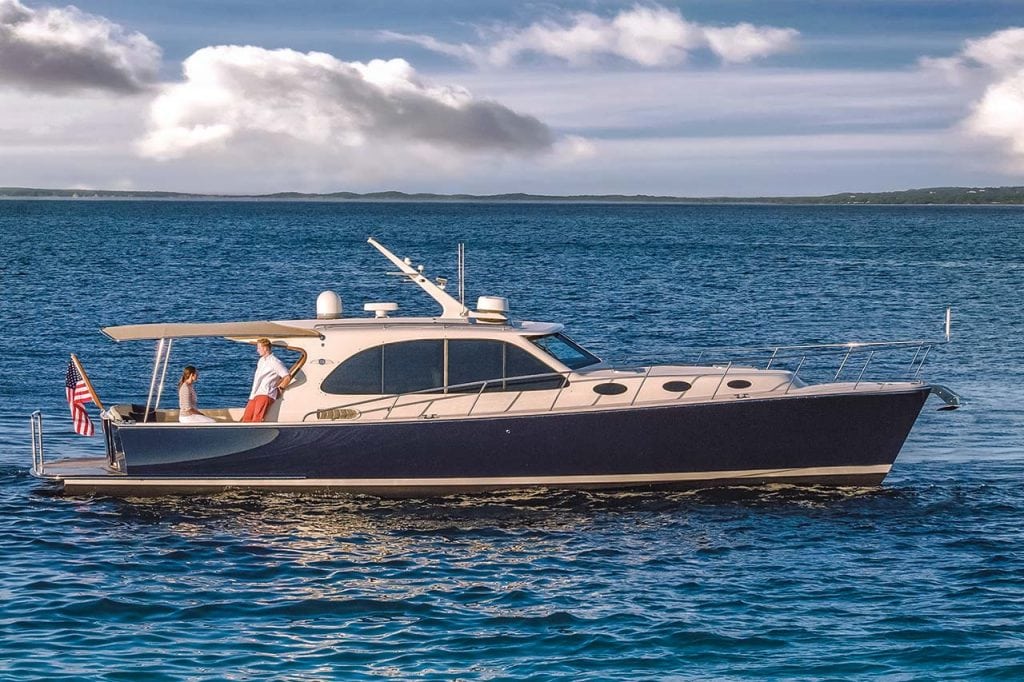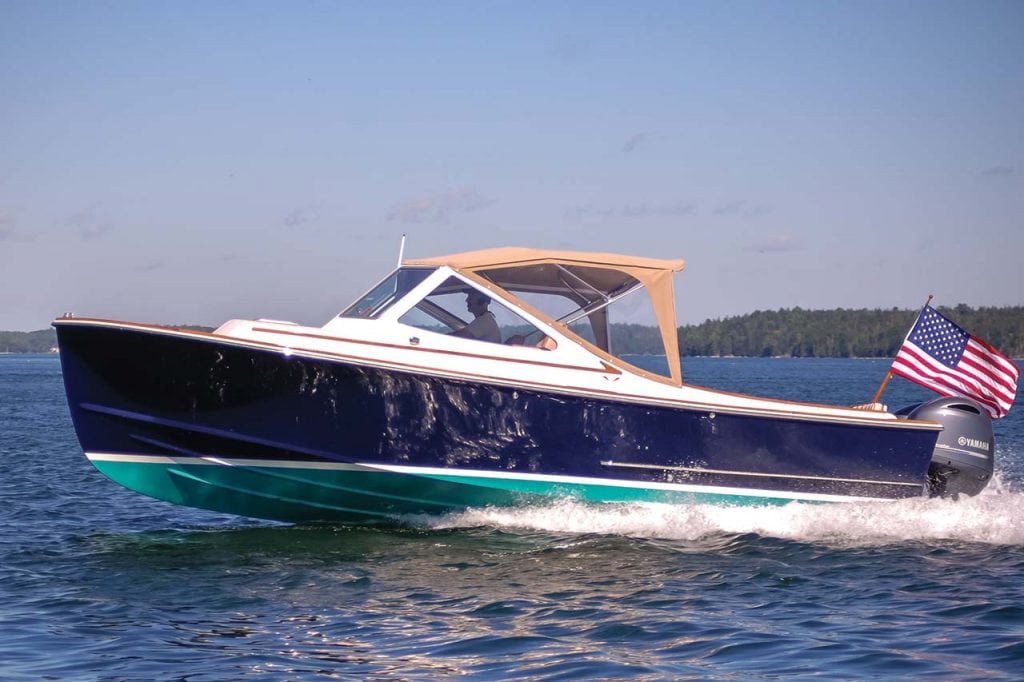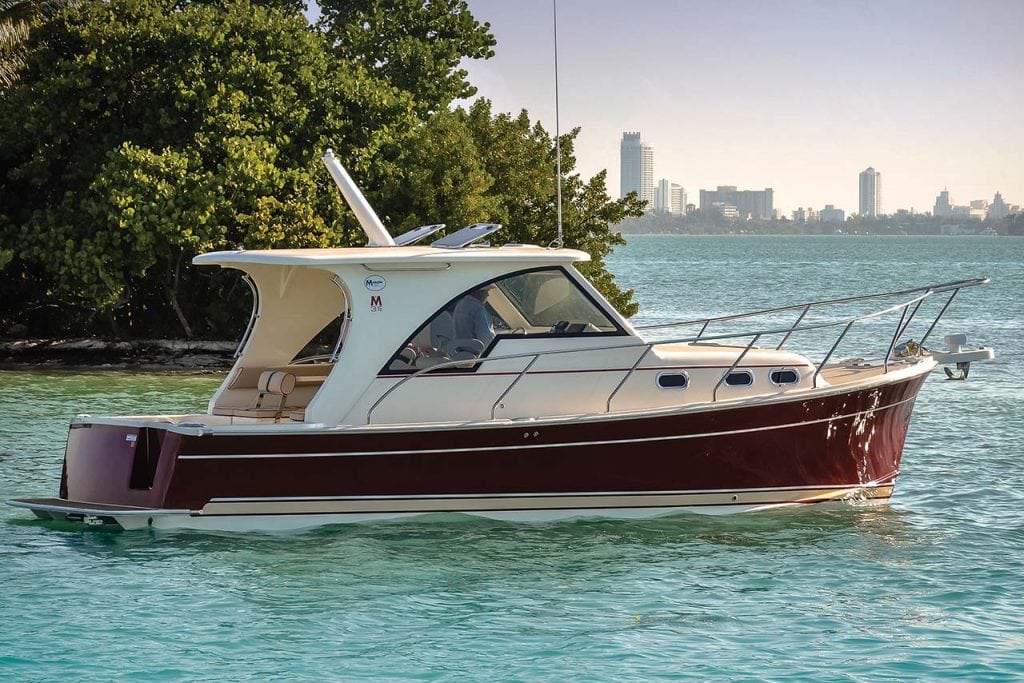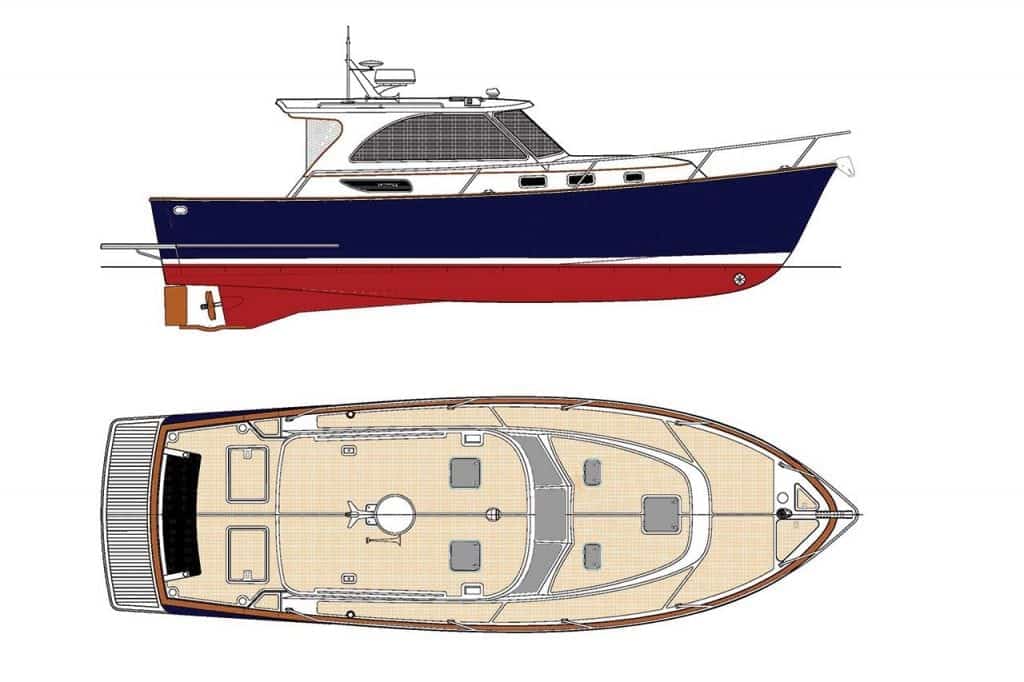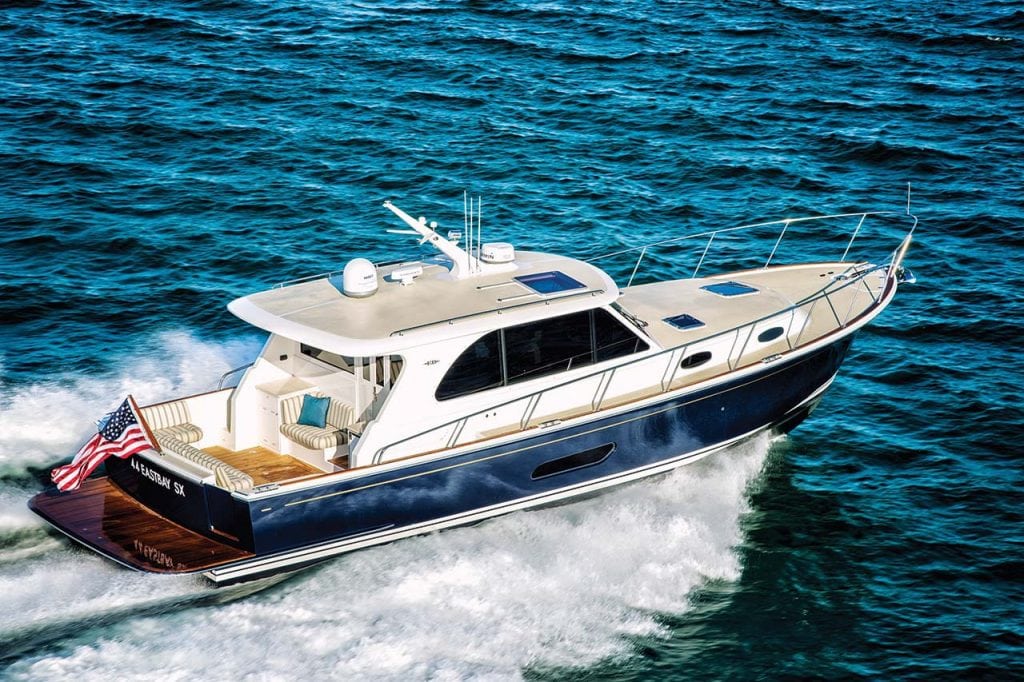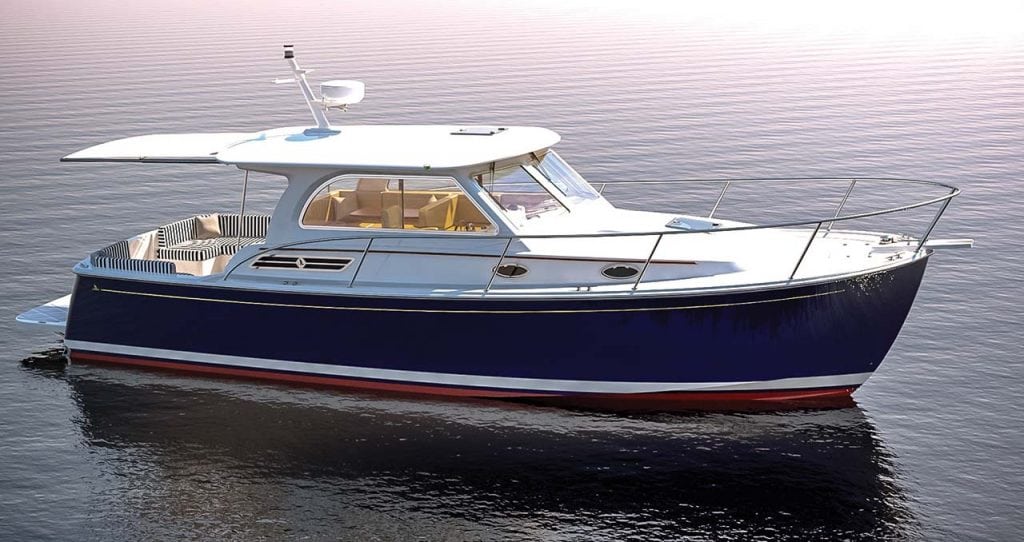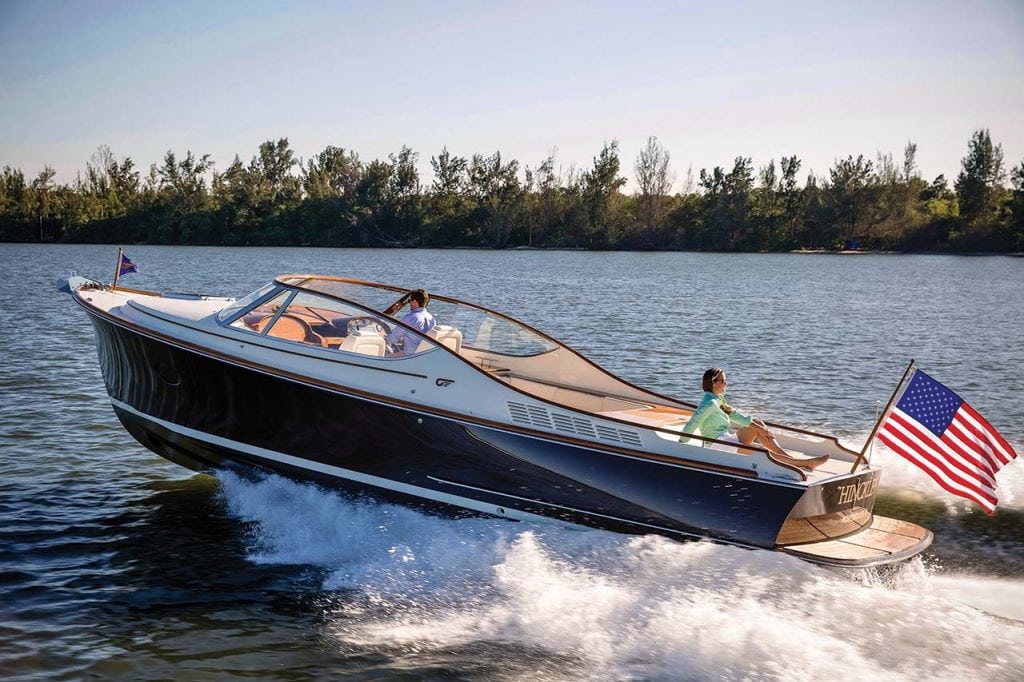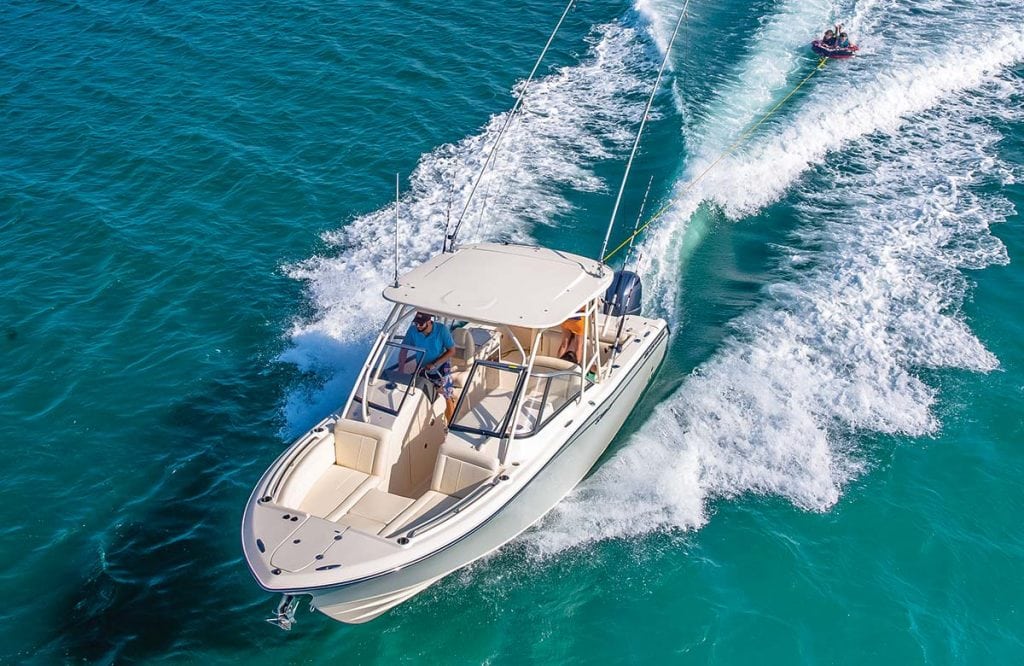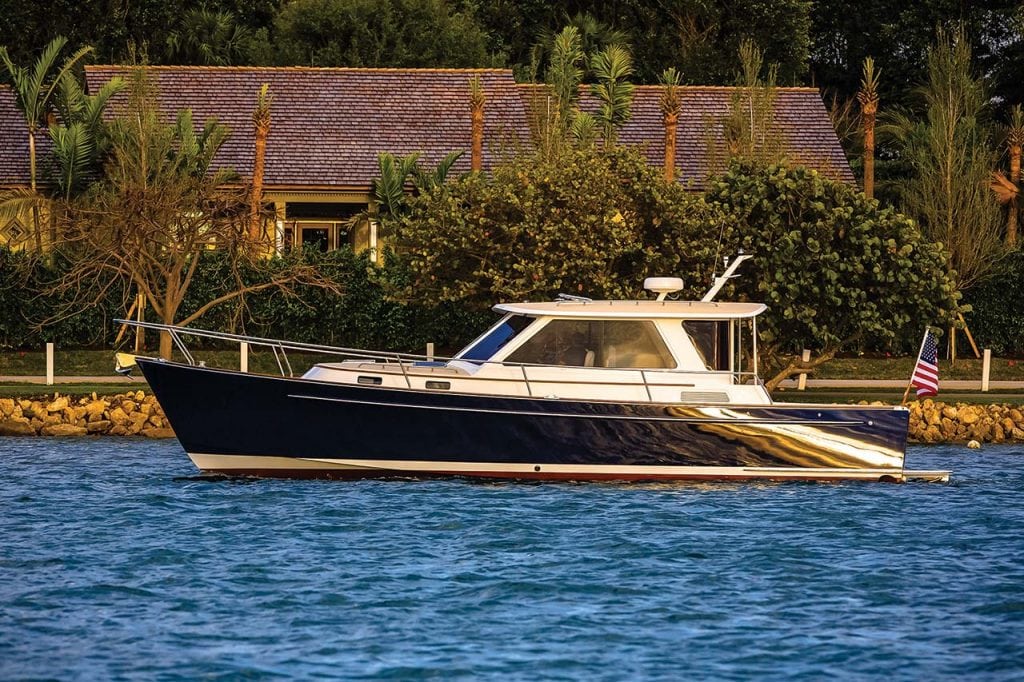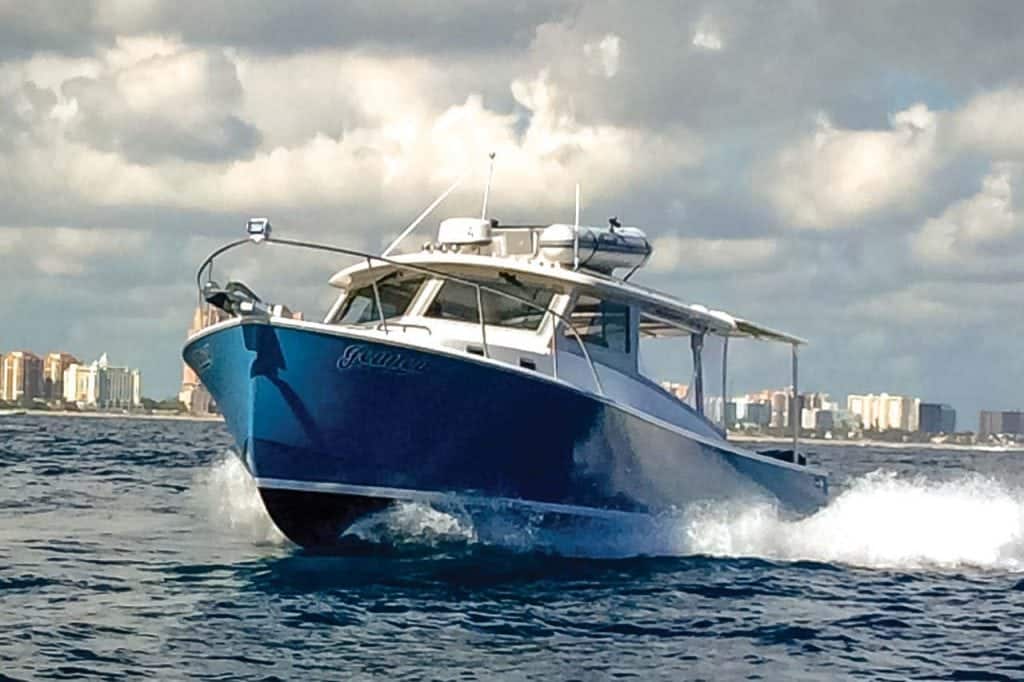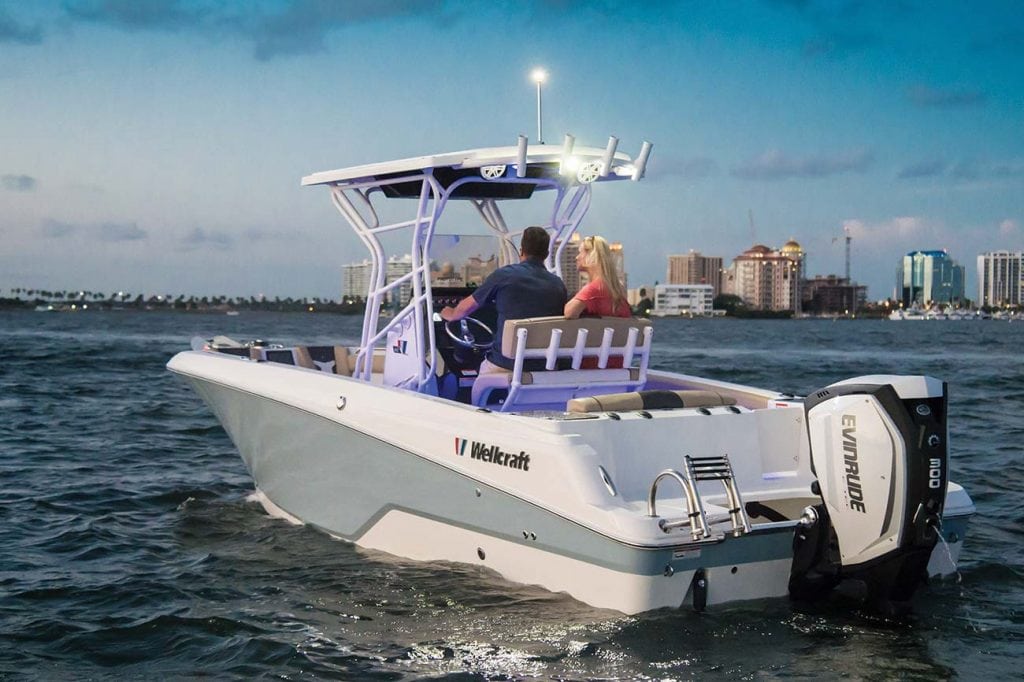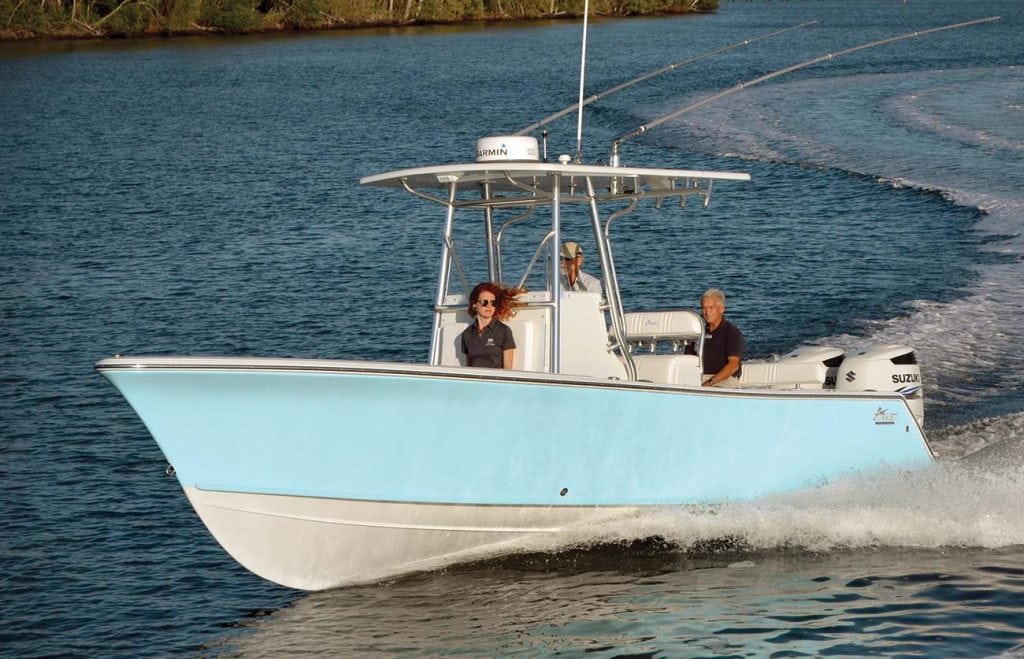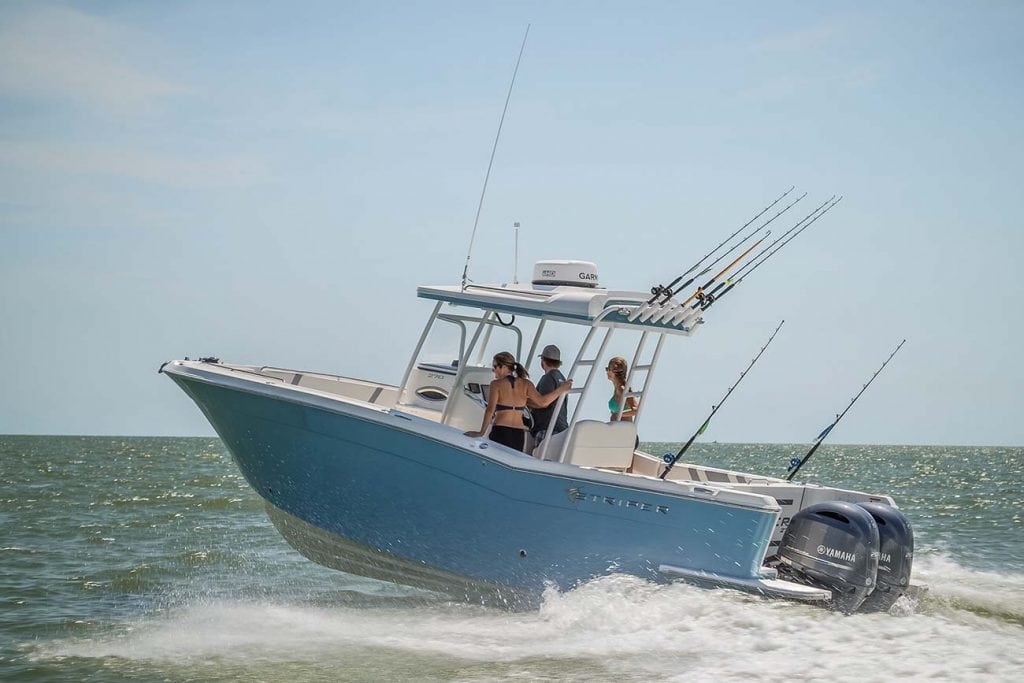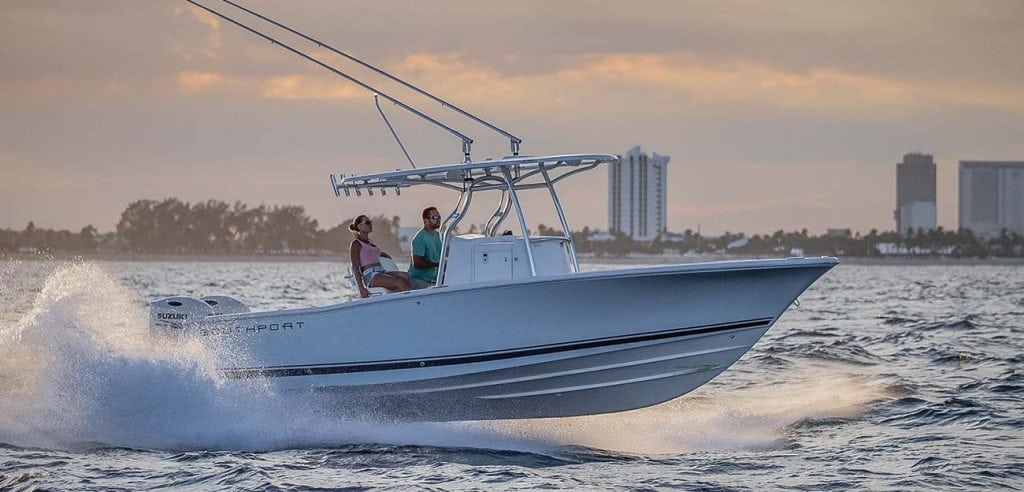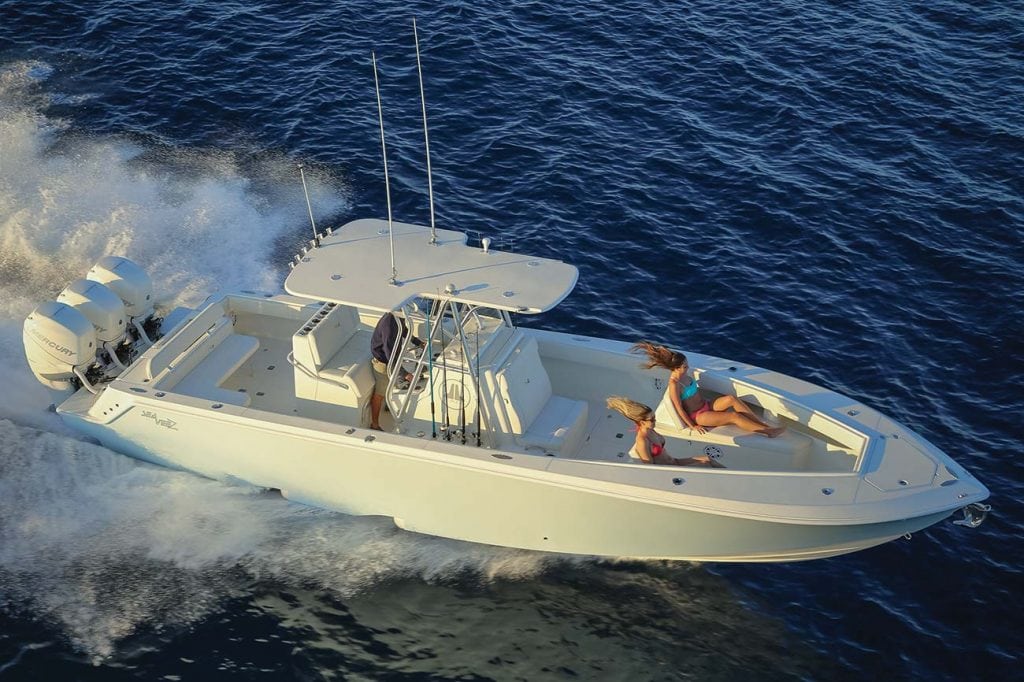Boats
You want boats? We got boats! From classic cruising boats to flashy center consoles boats, Southern Boating is your go-to place for the latest and greatest boats on the market. From center consoles to motoryachts, Southern Boating is the authority on warm-water cruising.
Palm Beach 42
The first new model since Palm Beach Yachts was acquired by Grand Banks two years ago, the Palm Beach 42...
Read moreDetailsPadebco V25R
It doesn’t get much more Downeast than Round Pound, Maine, a beautiful, protected harbor that serves as the gateway to...
Read moreDetailsMarlow Pilot 31: Downeast Dream
Marlow’s entry-level cruiser, the new Marlow Pilot 31, is designed for comfortable cruising for a couple or a small family....
Read moreDetailsLegacy 36
Tartan Marine relaunched the Legacy brand 18 months ago with the original Legacy 32 and Legacy 38. Now Tartan has...
Read moreDetailsGrand Banks 44 Eastbay SX
When Grand Banks acquired Palm Beach, the luxury Australian builder, two years ago, it named Mark Richards, the Palm Beach...
Read moreDetailsBack Cove 32: an Eastern Classic
It’s been ten years since Back Cove launched its first boat, a 29-foot single-engine diesel designed to make cruising easy....
Read moreDetailsHinckley 34R
The newest model from Hinckley, a 34-foot runabout, (Hinckley 34R) is the newest in the iconic builder’s line of elegant,...
Read moreDetailsGrady-White Canyon 271 FS & Freedom 275
Never ones to rest on their laurels, Grady-White Boats introduced two new models at the 2016 Miami International Boat Show....
Read moreDetailsBruckmann Abaco 40
They don’t come much more traditional—or much better looking—than the Bruckmann Abaco 40, a single-diesel, straightforward, solid Downeast boat with...
Read moreDetailsEastport 32 OBX
With classic Chesapeake Bay deadrise lines, the new Eastport 32 OBX (outboard express) traces its heritage to a waterman’s working...
Read moreDetailsWellcraft 242 Fisherman
The Wellcraft 242 Fisherman (24'4" LOA, 8'6" beam) is available with three distinct packages and seven color schemes to meet...
Read moreDetailsStuart Boatworks 27
The new Stuart Boatworks 27 Center Console was built after the success of the improved Stuart 26. After building 22...
Read moreDetailsStriper 270 CC
The new Striper 270 CC (27'2" LOA, 9' beam) is a center console that takes its shape, lines and contours...
Read moreDetailsThe Southport 272
The new Southport 272 (26'6" LOA, 9'6" beam) was designed to be a soft-riding and dry offshore center console from...
Read moreDetailsSeaVee 340Z
The new SeaVee 340Z (34'9" LOA, 10' beam) features the patented twin-stepped, cross-ventilated hull incorporating multiple lifting bodies and unique...
Read moreDetails

